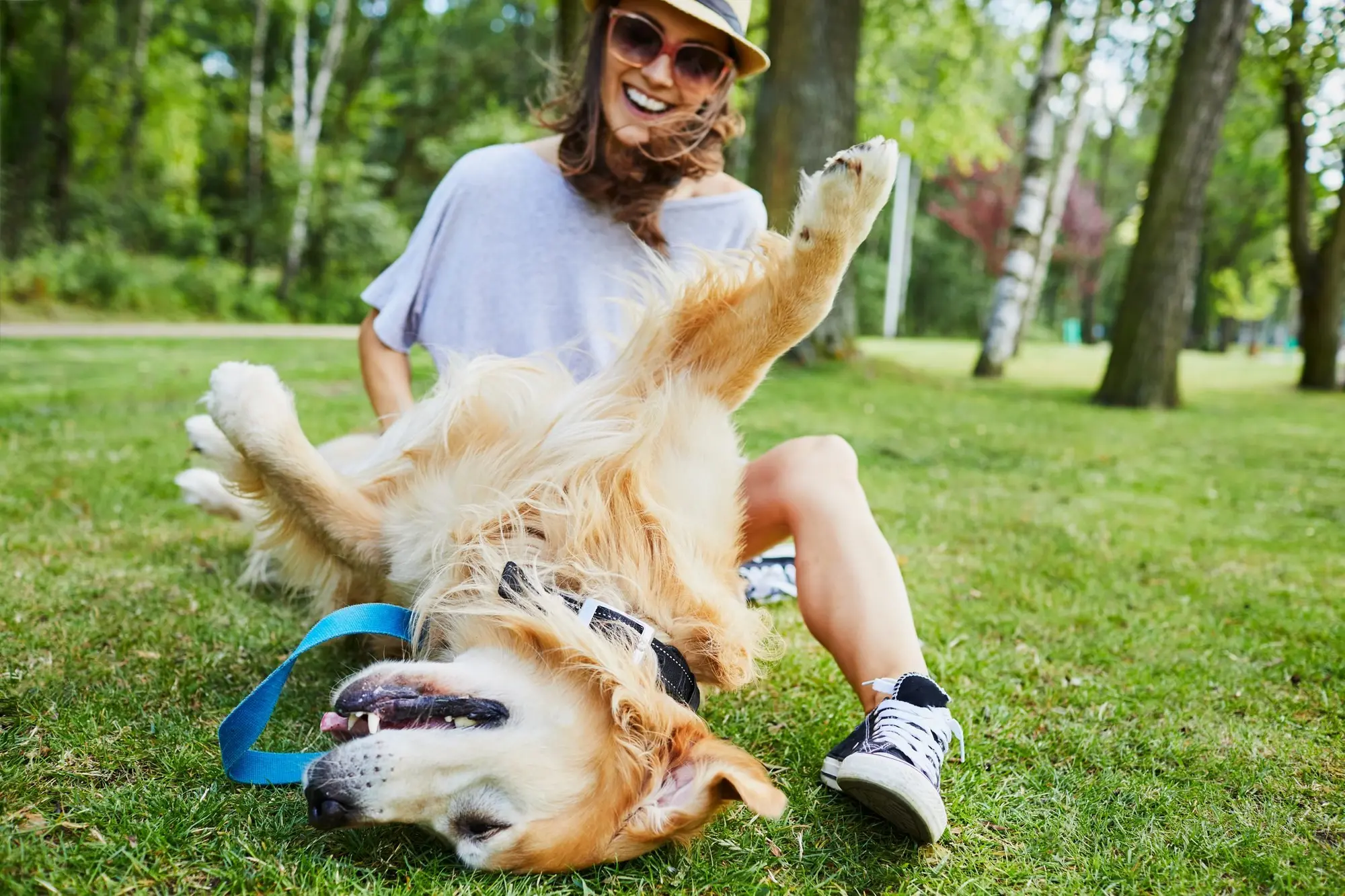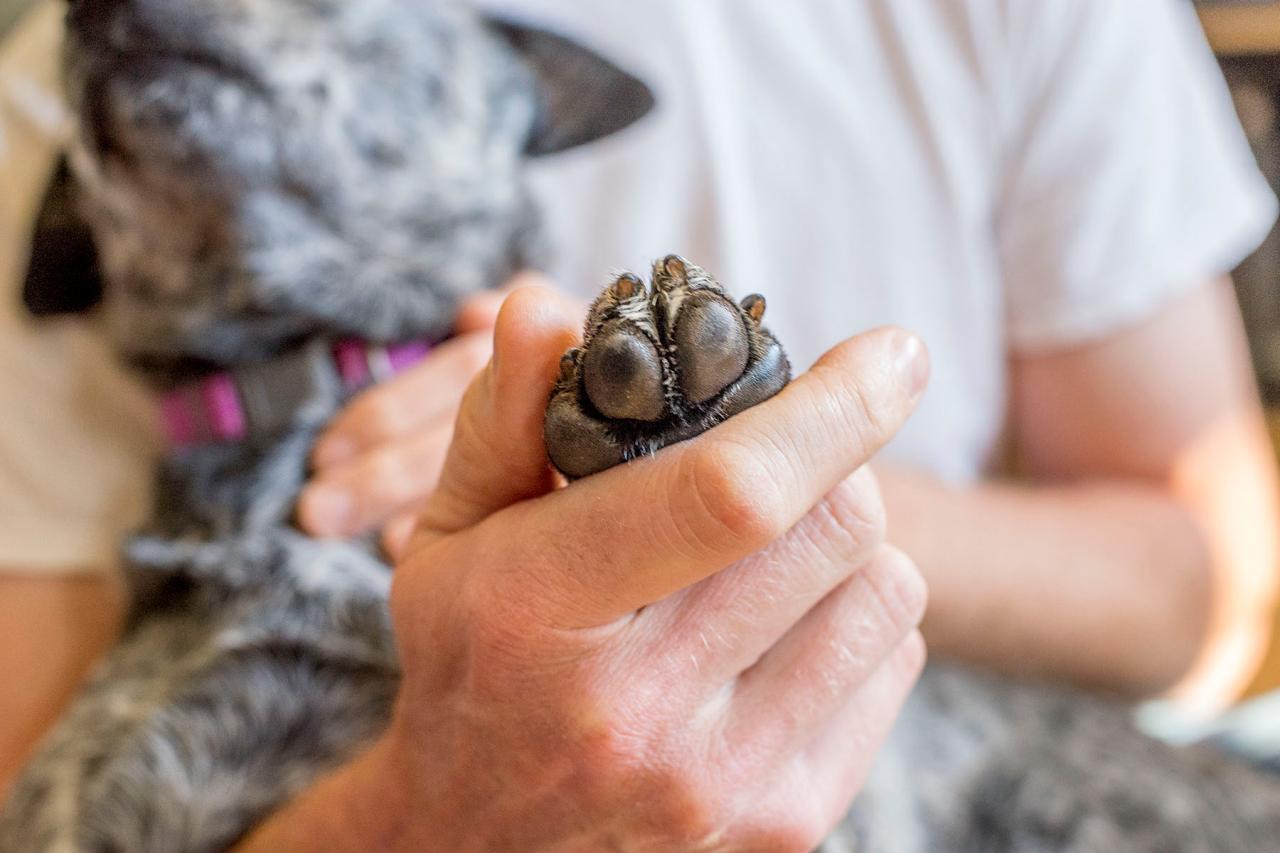Have you ever wondered if you can tickle a dog? And where are they most ticklish? Let’s find out what being ticklish means to a dog.

Can You Tickle a Dog?
So many humans are ticklish. But have you ever wondered if your furry best friend is? Of course dogs love getting their bellies rubbed, but what does it mean for a dog to be ticklish? And what does that look like?
Feeling ticklish is actually defined by having a response to a touch that causes itching or laughter. And although dogs don’t exactly laugh, I’m sure you’ve seen a dog kick their leg like crazy when they’re getting a belly rub. And some dogs will even make little sounds.

Why Do Dogs Kick Their Legs?
We see dogs kick their legs when a human’s petting or scratching really hits the spot. But why do they do that? It’s actually because certain nerves are being stimulated. They have various nerves under their skin—just like we do. These nerves connect to their spinal cord. And when a certain nerve gets stimulated, a “message” is sent from their spinal cord to their back leg—causing it to involuntarily move around as you scratch.

Where are Dogs Most Ticklish?
What are dogs’ ticklish spots? For some dogs, it’s when they get their belly rubbed. And for others it’s getting scratched on their chest, behind their ears, or even getting some scratches at the base of their tail. Occasionally you’ll even find dogs who are ticklish on their paws.
Do Dogs Like Being Tickled?
Sometimes when us humans get tickled, it’s so intense, it’s almost painful. For dogs, it’s typically not the same. If a dog is uncomfortable or in pain, they’ll let you know by making a painful sound, or by trying to get up and run away. Usually for dogs, if they like certain belly rubs or ear scratches, they’ll lean into it, kick their leg, and sometimes close their eyes. And if you stop, they may even give you a look—wondering why you stopped, and wanting you to continue.
How to Tickle a Dog’s Belly
Some dogs are ticklish on their belly, and others aren’t. But if you find that “just right” spot, they’ll let you know with a leg kick or a happy sound. Have you ever wondered why your dog rolls onto their back? Sometimes it is to let you pet or tickle their belly. But other times it could be a sign of submission. It can even happen when you’re playing together and your dog trusts you and is comfortable with you.

Do Dogs Laugh?
As much as we’d like to humanize our dogs, the general consensus is that dogs can’t laugh. Not the same way that humans do, anyway. When dogs are playing and having fun, they often make a sound similar to that of a laugh. And they’ll even look like they’re smiling. But we all know it’s just them heavily panting from all that fun playtime!

Benefits of Tickling Your Dog
Dogs are social creatures who crave social bonding. This is a large part of their relationship with you. And when you tickle them, you are spending undivided attention petting them and doting over them. And when you see their happy response, you instinctively respond happily too. Then they see your response—and round and round it goes.
Negative Responses to Tickling
Just like some humans don’t respond well to touch or tickling, some dogs won’t respond well either. It could be uncomfortable for them. Or it could just be new and weird. In some cases, a dog may have been abused by their previous owner. And this could make your dog hesitant to let you touch them, or for them to be vulnerable. They may think you are trying to harm them. And that might cause them to act aggressively by growling or even snapping at you.
Positive Reinforcement for Dogs
If your dog does show signs of fear or aggression, this might take a while. But you can try to help them by using positive reinforcement. Start slow, be gentle, and watch for their body language and reactions. Try using a sweet “baby voice” to praise them. And treats are always helpful! If they associate you petting and tickling them with receiving praises and treats, they could start to relax and enjoy the pets instead of being afraid of them.
Just remember that if they do start to act aggressively again, stop immediately. Try not to react in a negative way. But rather, talk to them in a calm, soothing voice again. Take a break for a while, and try again another day.
Dogs Are Ticklish
Now that you know your dog is ticklish—in their own way—it’s time to start tickling! Spend that much needed social bonding time with your sweet pup. It’s good for their emotional well-being, and it’s good for yours too.






